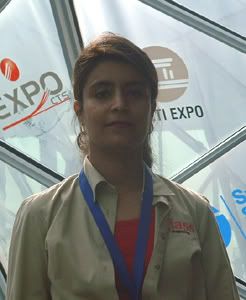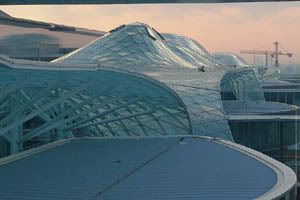 —By Katy Devlin, e-Newsletter Editor
—By Katy Devlin, e-Newsletter EditorDo you remember when “green” was just a color? I don’t.
I was born in 1983, a decade after fuel prices spiked to shocking levels—so I’ve been told by people much older than I—jump starting the environmental movement. Though prices fell, and America got comfy again with cheap energy, the eco-friendly fire had started to spread.
In this post-oil embargo age, I grew up proudly as part of what I call generation green. Ever since I can remember, “green” lived in my environmental vernacular right along with the mantras “save the rainforest,” “no CFCs,” and “reduce, reuse, recycle.”
Yes, the green generation learned and lived environmental responsibility in every part of life.
Science classes taught biology, chemistry and environmental studies. And every year, I joined students across the country as environmental soldiers on Earth Day, picking up trash in nearby parks, creating recycling plans for their homes and schools, and planting trees. Even popular media got on board. Anyone else remember Captain Planet? He was the cartoon environmental superhero who that told kids “the power is yours,” to save the world from pollution and environmental waste. And who in my generation could forget the heart wrenching “Oil Episode” of Saved by the Bell where Zack Morris and crew weighed the importance of money with the lives and heath of animals when oil was discovered under the Bayside High football field. (Read a recap here, but all you really need to know is that a good lesson was learned by all).
Even popular media got on board. Anyone else remember Captain Planet? He was the cartoon environmental superhero who that told kids “the power is yours,” to save the world from pollution and environmental waste. And who in my generation could forget the heart wrenching “Oil Episode” of Saved by the Bell where Zack Morris and crew weighed the importance of money with the lives and heath of animals when oil was discovered under the Bayside High football field. (Read a recap here, but all you really need to know is that a good lesson was learned by all).
I find it very fulfilling in my adulthood to witness ever-increasing attention to all things green (who would have ever thought Al Gore would become an Oscar winner and Nobel Peace Prize recipient?).
Watching big strides taking place right here in our industry has been even more exciting. Glass companies come up with greener products and greener manufacturing processes every year. And as a result, our buildings are becoming more efficient.
There’s still a lot of work to be done—buildings still use up about 1/3 of the nation’s energy and 2/3 of the nation’s electricity—but, we’re getting there.
I can’t wait to see what changes will happen when the next generation—perhaps generation extreme-green?—comes of age.

 Posted by
Posted by 



